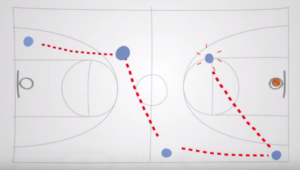Attribution is defined simply as “giving credit”. It’s an important concept in measuring success with advertising, including understanding how all channels work together on a multi-touch path to conversion.
There are 3 types of attribution problems:
- Measuring offline outcomes driven by an online channel.
- Measuring across multiple screens (TV, desktop, tablets, smartphones).
- Measuring across digital channels (Social, Display, YouTube, Referral, Email, Search, others).
Because iDimension is a Google Analytics Certified Partner, we are best suited to write about measuring attribution with Google Analytics (GA).
Before we dig into how to use GA to measure attribution – let’s review how GA can get in the way of doing so. Most of the reports in GA employ what’s called a last non-direct click attribution model.
Last Non-Direct Click Attribution
All standard reports in GA give 100% of conversion credit to the last “campaign” prior to the conversion. Campaign is defined as anything but Direct traffic. So, the campaign could be Social, Organic Search, Email, Display, Affiliate, Referring Site … anything really.
 Pretend you visited a website 4 times from the same device, and converted on the 4th visit. The first visit was from an organic search results click, the second was from a social network link click, the third was from a paid search ad click, and the fourth or last visit was direct (you typed the domain directly in your browser address bar – same device). Again, you converted on the last, direct visit.
Pretend you visited a website 4 times from the same device, and converted on the 4th visit. The first visit was from an organic search results click, the second was from a social network link click, the third was from a paid search ad click, and the fourth or last visit was direct (you typed the domain directly in your browser address bar – same device). Again, you converted on the last, direct visit.
The last non-direct click was a paid search ad click, so even though you converted in the fourth visit that was direct, in GA standard reports paid search would get all of the credit.
This deliberately understates the Direct visits that lead to a conversion. It also completely ignores the channels that brought the earlier visits in the conversion path.
You need to be aware that this model is being applied to all but a select few GA reports, and understand how it can influence your decision making.
Multi-Channel Attribution
 Think of a conversion path like the path of a basketball on the court from player to player before a shot at the basket is possible.
Think of a conversion path like the path of a basketball on the court from player to player before a shot at the basket is possible.
Basketball is a team sport. Players interact with each other, passing & dribbling the ball to & from one another, until a shot is made that goes in the basket. The players that assist in scoring a basket are certainly important. Sometimes without those assisting players, no basket is made.
Digital channels can assist in generating conversion value in a similar manner. A report that considers multi-channel attribution would help us see if the channel is assisting, and make a more informed decision.
GA reports that consider multi-channel attribution are a minority, but they do exist. The heart of GA’s consideration for multi-channel attribution is in Multi-Channel Funnel (MCF) reports under Conversions.
Get help navigating the murky water of multi-channel attribution
Offline outcomes measured via measurement protocol.
The Google Analytics Measurement Protocol allows developers to make HTTP requests to send raw user interaction data directly to GA servers. This allows developers to measure how users interact with their business from almost any environment.
Developers can then use the Measurement Protocol to:
- Measure user activity in new environments.
- Tie online to offline behavior.
- Send data from both the client and server.